This article is the first in a two part series on establishing native Australian grasslands in a garden context, specifically for nature strips in the Melbourne area.
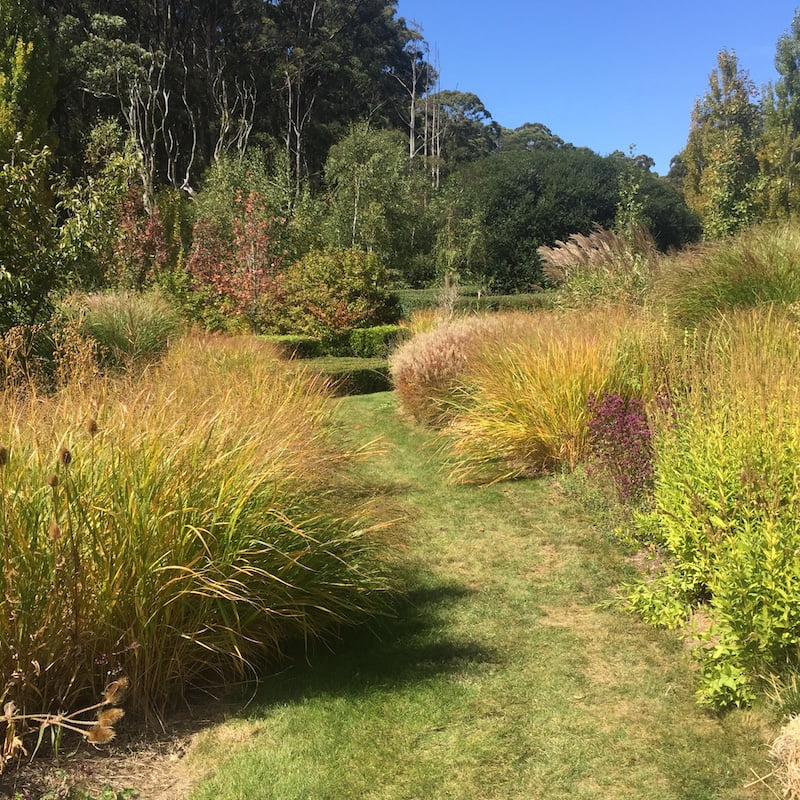
A great example of the prairie school – Frogmore Gardens here in Australia
Prairie and meadow styles of design have enjoyed a huge interest from gardeners in the last 20 years, and little wonder. Who doesn’t love the delicate ballet between blocks of breeze-catching texture punctuated by drifts of subtle colour? The most beguiling aspect of this burgeoning popularity in Australia for me has been the almost complete lack of popular interest in our native grasses to achieve a similar aesthetic. In Australia we have an ecotype that beautifully mimics a prairie-style sensibility – our own native grasslands – once biodiverse wonders that blanketed vast swathes of temperate regions throughout the southeast of our continent.
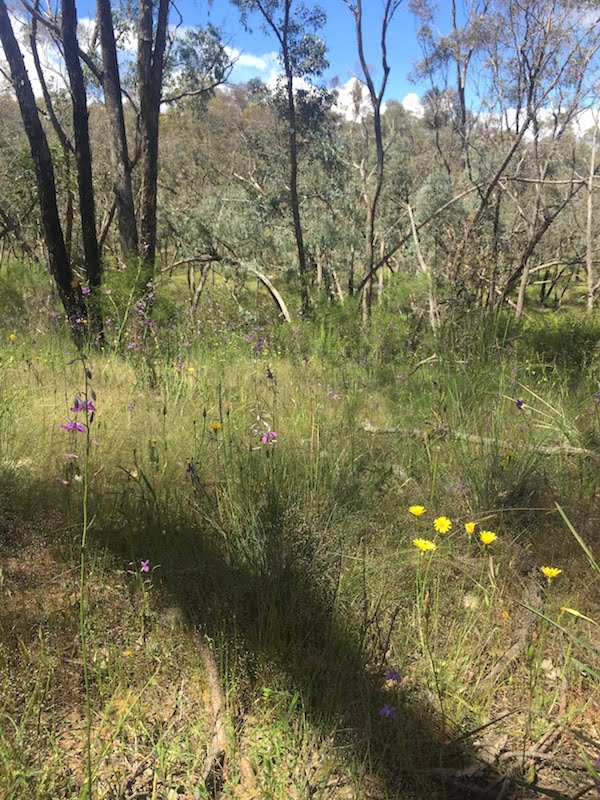
An intact, but not well-managed local grassland with chocolate lilies and yam daisy adding seasonal colour.
There are so few well-managed grasslands left that people can go and see themselves, which goes a long way to explaining their absence in our gardens. In Victoria, where I live, less than 1% of grasslands exist compared to their previous range. As gardeners we often ‘ooh and aah’ over rare plants we grow, the vast majority of them exotic, but there are a plethora of local, indigenous grassland plants that are just as deserving of the title. A sound way of ensuring their existence into the future is to grow them yourself.
I set out to try and create a native grassland, turning my nature strip over to native grassland plants just on 20 months ago. The results have been incredible, I’m very pleased with the way it’s shaping up. Aesthetically I think it a very beautiful thing, though I’m sure some pedestrians probably walk past it and wonder when that skinny bloke is going to mow his bloody grass. Far more stop and linger to take a closer look, some delight further still by asking questions.
#gallery-1 {margin: auto;}#gallery-1 .gallery-item {float: left;margin-top: 10px;text-align: center;width: 33%;}#gallery-1 img {border: 2px solid #cfcfcf;}#gallery-1 .gallery-caption {margin-left: 0;}/* see gallery_shortcode() in wp-includes/media.php */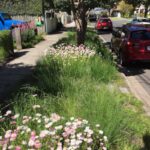 14 months after planting
14 months after planting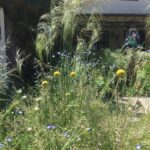 Billy buttons and spear grass
Billy buttons and spear grass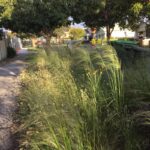 Spear grass catching the light.
Spear grass catching the light.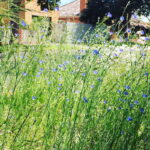 Native flax, Linum marginale, an indispensable drifting-forming source of blue in the grassland.
Native flax, Linum marginale, an indispensable drifting-forming source of blue in the grassland.
You really need to want one in order to have one, they’re not easy things to establish and their maintenance requires more ecological than gardening-thinking. They take effort and careful planning, but then what good garden doesn’t? I worked in bushland management for several years, managing and monitoring some wonderful little patches of remnant grassland around Melbourne. The experience was a steep learning curve, requiring a horticology approach rather than an ecological or horticultural one. It was often tough graft, but the time spent was invaluable. Getting to know patches of grassland around your area is a great start*.
While native grasses such as ‘poa lab’ (Poa labillardieri) have been in the collective conscience for a number of years, many other grasses have missed out. Broadly speaking, there are several genera of garden merit that make great additions to grassland-style plantings. These include, but are by no means limited to, the wallaby grasses, Rytidosperma spp. (formerly Austrodanthonia spp.); the spear grasses, Austrostipa spp.; kangaroo grass Themeda sp.; tussock grasses, Poa spp.; and plumegrass, Dichelachne spp. As a collection of genera they represent hundreds of species to choose from. They make up the bulk of grassland biomass, though this list isn’t comprehensive by any means. My advice is to learn about them, what they look like and how they grow. They’re all different and provide a myriad of textures and colours at your disposal to design with.
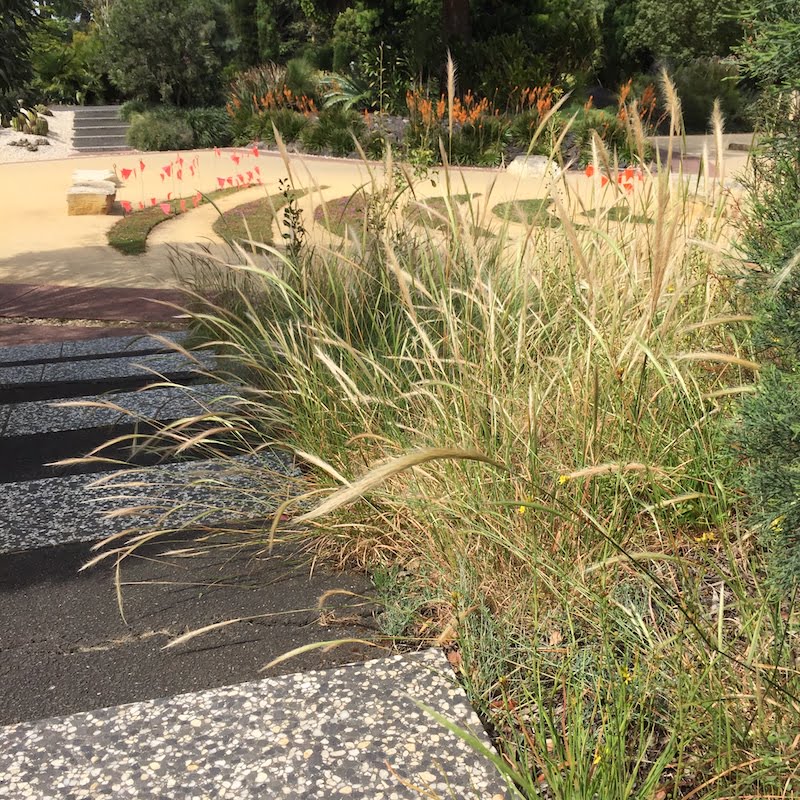
Dichelachne micrantha at the Geelong Botanic Gardens. This is one of the must underused of all Australian grasses!
All of the above grasses give great value over a long season. Whether they’re gearing up to flower, setting seed or have long dehisced it, like all grasses they go through seasonal changes several times a year and look ornamental at every single one. My favourite time of year in my grassland is late summer. There’s not a lot of colour around as the weather’s very hot, but the wallaby grass species I have planted retains its glumes, its empty seed heads, for months after the seed is shed. Glumes on mass in the afternoon light, catching a zephyr, look as stunning as any flower you’ll come across.
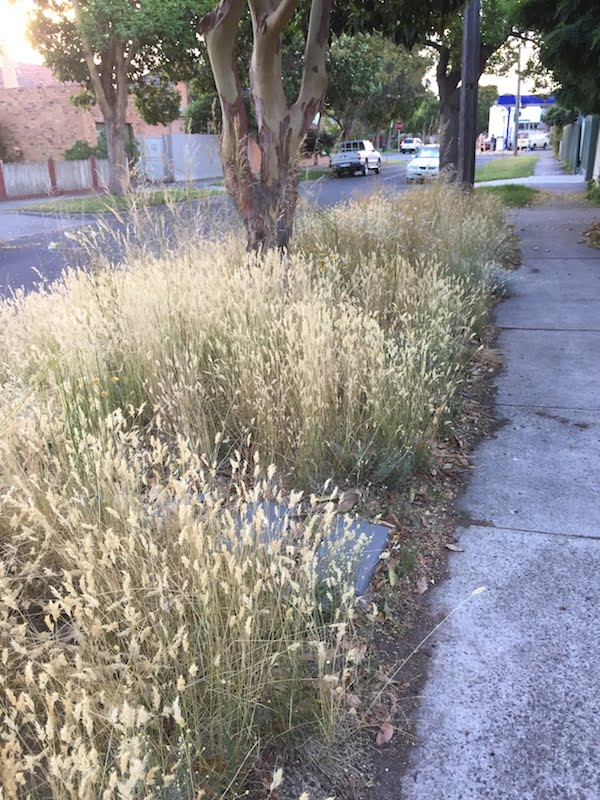
High summer in my grassland. The glumes of wallaby grass and spear grass on mass make a striking effect.
Why Should You Want a Suburban Grassland?
Apart from there not being much of them left and their aesthetic beauty, once established (the tricky bit), ongoing maintenance is really very easy. Once you get a good coverage of grasses they are highly effective at choking undesirables out. What weeds do grow are easily noticed and hand-pulled. Furthermore, native grasslands don’t require any supplementary irrigation at all. The vast majority are soundly perennial – they will often brown off, almost completely in summer, which is a an ideal time to give them a mow. They will readily reshoot when cooler, wetter weather returns. Most of them ‘recruit’ readily – they easily spread by setting seed. Establishing them well is all about getting your timing right with planting/sowing. Get this right and you’ll only have to water your plants in – they’ll never see the nozzle end of a hose again.
Native grasslands have huge biodiversity values, not just for the plants they contain. A vast number of insect species call grasslands home, many exist only to visit specific plants, which is remarkable. One of many examples: I have a couple of species of native bee that visit mine which are known to feed exclusively on wahlenbergia flowers. Many other similar relationships exist in my grassland and for every insect I identify there are probably a dozen more I don’t even see. A diversity of insects means a large population of potential garden helpers that will often help keep the populations of other problem insects in check. Toward the end of winter for last three years, I had massive problems with aphids on a Veronica perfoliata in my front garden. I haven’t seen any at all these past two years and I suspect the new grassland and its residents are probably responsible. These unseen helpers make pest management in the rest of my garden easier. Where they come from and how they find their way to a 2.5m x 8.5m patch of land in the middle of the northern suburbs of Melbourne is a great mystery to me, one I would like to solve, but I’ll also be content with the romanticism of continuing to wonder in the meantime.
Prepping Your Strip
Before you do anything check your local council’s rules around naturestrip gardening. They vary considerably between municipalities, most require a permit and others may even slog you a fee for the privilege. For Melbourne specifically, site prepping is best done in late summer/autumn/early winter, whilst aiming to plant in late autumn to winter (when rainfall is reliable and plentiful here) so get your permissions in order well beforehand.
It’s also advisable to think about foot traffic and put in a little bit of infrastructure to direct it through your strip. Many a nature strip gardener has torn their hair out at people trampling their plants. My advice on this front it to put in a couple of paths – people will use them instead of walking through knee-high grass, but not always! At the end of the day a nature strip is land that people will always cut across. For you own sanity just accept that this will happen, as getting a bee in your bonnet every time you see a person traipsing through it will only lead to a cultivation of madness, and others may see you as a bit unhinged. Let it go.
So you’re looking at your nature strip as a potential grassland – what do you see there now? There’s probably grass and likely a few different species of it. Kikuyu is common in Melbourne’s nature strips, as is Ehrharta erecta (panic veldt grass), couch, and winter grass (Poa annua) waiting to pop up once the weather cools off. There are likely broadleaf weeds too, such as dandelion species, flick weed, oxalis, chickweed and pimpernell, among many, many others. The critical thing to understand at this stage is that all these plants have been dropping seeds into your little strip far longer than you’ve been eying it off as a potential garden. There is a sleeping army of thousands (millions?) of seeds just waiting to germinate and cause you grief. Grief bears an inverse relationship to enthusiasm – a parlous state that will put your grassland at risk in the future. Avoid it as best you can.
To make the establishment of your grassland as least stressful as possible, your existing nature strip grass needs to be cleared and this weedy seed load dealt with somehow. You’ve three main options on this front:
Scalping the soil, taking at least the first 75mm (3 inches) off, seed load with it, and getting rid of it (expensive but highly effective in controlling weed seeds). A turf cutter does this job brilliantly well.Solarising the whole area by placing black plastic over it for several weeks in late summer – this will cook a large mount of the seeds, though not all, as well as kill grasses and broadleaves (effective on some weeds, but not all, and it looks atrocious). Steaming might also work but I can’t vouch for its effectiveness.Herbicide is another option (judgment on the ethics of their use should be suspended for the purposes of this article). It will clear grass and kill the weeds that are growing, but it won’t deal with the weed seed load at all. This option requires intensive hand pulling as weeds come up, mainly during winter.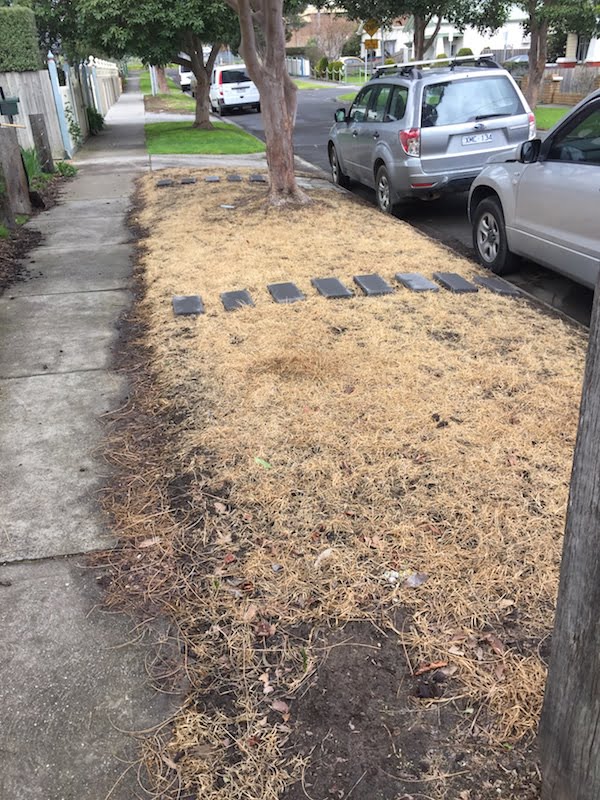
Weeds killed off and simple pathways about to go in.
Deciding which you use will depend on your budget and the amount of effort you are prepared to put in. The bushland manager in me saw me using the last – killing off my kikuyu with herbicide and hand weeding what popped up. I spent a lot of time weeding, time that would make well-hardened gardeners shriek in horror. But there are two reasons why I went down this path.
Firstly, I rather enjoy weeding, especially with a beer in hand. The second is that hand weeding means you are down there on your hands and knees regularly, right at the coalface of your changing ecology, watching it and making observations of the little differences that emerge week-by-week. You constantly learn about the plants and the way they grow together, often without realising it. If you hand weed you will soon be able to tell the difference between goodies and baddies, like a weedy Poa annua seedling and a local wallaby grass seedling. The phrase ‘getting your eye in’ applies here in a big way. If you get your eye down to this level and pick up those differences you’re well on your way to a successful suburban grassland of your very own.
If you’ve got this far, well done! I’m happy to answer any queries on the topic of site prep.
The next instalment will cover selecting species, planting, maintenance and a controversial question: to mulch or not to mulch?
Until next time, happy gardening.
*Local grasslands around Melbourne. The following list and links are those good for exploring and observing throughout the year, hitting their aesthetic peaks in late spring through to mid-summer, they include:
Ngarri-djarrang Grassland, Reservoir, Victoria (Melways Map 8, B12)The northeast corner of Proclamation Park, Sylvia Grove, Ringwood, Victoria.Melton Botanic Gardens, extensive areas of revegetated grasslands. Some of the best in Melbourne.Geelong Botanic Gardens also has an extensive planting of native grasslands along its main driveway entrance, a really beautiful sight in mid-late spring.
